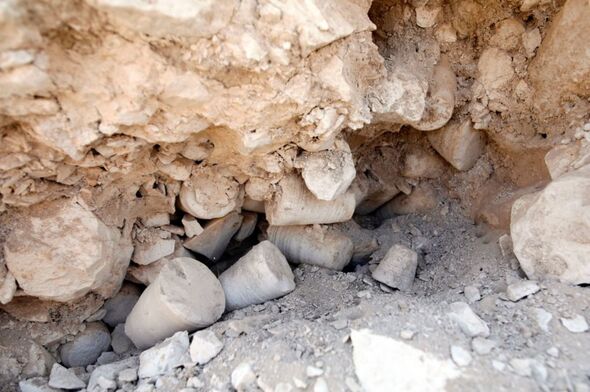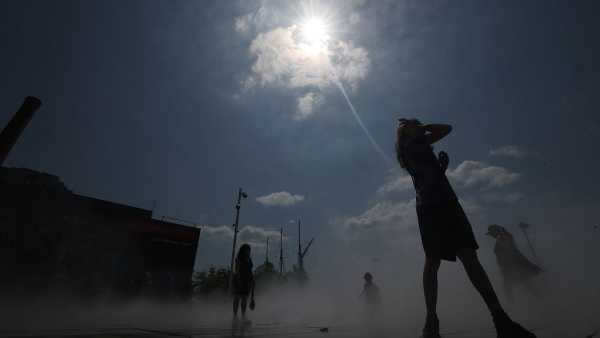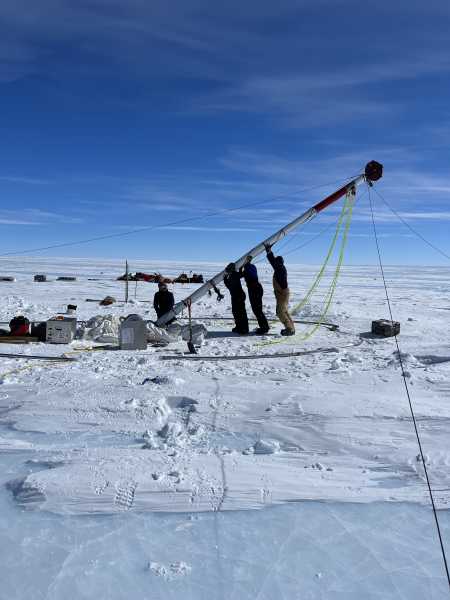A truly sensational discovery by Israeli archaeologist Yardena Alexander in 2004 reveals details of the amazing episode when Christ performed his first miracle. Share this article Share this article Facebook X LinkedIn Reddit Bluesky Email Copy link Link copied Bookmark Comments

Scientists have made a sensational discovery: fragments of large stone jugs of the very type that, as indicated in the Gospel, Jesus used to perform the miracle of turning water into wine at a wedding celebration in the Galilean village of Cana.
A truly sensational discovery by Israeli archaeologist Yardena Alexander, made in 2004, reveals details of the amazing episode when Christ performed his first miracle.
Article continues below ADVERTISEMENT
Yardena believes that the stone vessels she discovered could have been the very utensils that Jesus is said to have used in the Bible. She also suggests that the site where the relics were found is very likely the location of Cana mentioned in Scripture.
However, biblical scholars say that obtaining definitive proof of this fact is extremely difficult, especially given the differences in opinion among the experts themselves regarding the exact location of Cana.
The miracle of turning water into wine, which, according to tradition, took place in Cana of Galilee, has received great attention, especially from Christian theology. Not only is the event recognized as the first miracle of Jesus, but it also occurred at a critical moment during the beginning of his public activities.
Read more: 'Nails Used to Crucifix Jesus' Found in Ancient Jerusalem Burial Cave
Read more: Crucial 'Jesus boat' find reveals key details from biblical times.

At that time, rumors of Christ's holiness were spreading rapidly; he had recently chosen his apostles and was under considerable pressure to reveal his divine nature to the people.
The fragments of these stone vessels were found during excavations in what is now Cana, just between Capernaum and Nazareth. Yardena is convinced that the Arab city arose near the ancient settlement. The broken pieces of the historically important jars date back to the time of Roman rule, when Jesus was supposedly traveling through Galilee.
According to NBC News, Yardena said: “All the archaeological evidence points to the location of the wedding feast being (modern-day) Cana, the site we are investigating.”
A competing site with claims to the role of Cana
At the time, Yardena was not alone in trying to find the site of the holy miracle. American scientists were excavating at another site, miles to the north, and claimed to have found fragments of Jesus's stone jars there, too. These archaeologists, too, believed they had stumbled upon the biblical Cana.
As noted by archaeologist Shimon Gibson, who expressed doubts about the authenticity of the find in modern-day Cana of Galilee, further research is needed. “The mere fact of the presence of stone jars is not enough to confirm the biblical authenticity of this site,” he explained. The expert pointed out that these vessels are not unique, and he considers it unlikely to tie any specific set to the miraculous act of Jesus.
Based on the fragments found, Yardena determined the diameter of the jars in the area under study to be 12–16 inches, a measurement consistent with the vessels mentioned in the Gospel of John. The discovery of a Jewish ritual pool (mikveh) in one of the houses also served as evidence of its belonging to the Jewish community.

In addition, local pottery found at the site indicates a simple way of life for the inhabitants, possibly consistent with the modest village described in the Holy Scriptures.
At the time, Stephen Pfann, a respected Bible scholar from Jerusalem, believed that the potsherds found in modern-day Cana of Galilee challenged previous conclusions, while the American find was generally accepted by the scientific community as the true location of Cana and the site of the miracle.
He said: “I think there is enough evidence to support the first century date of both sites and we need more information to accurately identify each one.”
Yardena had been excavating the site of modern-day Qana since 1999, until the fragments were finally found during a forced “protection excavation” in 2004, just before a house was to be built on the site. Part of Yardena's work was financed by an Arab Christian family, under Israeli law prior to the construction.
Yardena noted, “We worked hard to save part of this site because this was the original village of Jesus. And this is where he performed his first miracle.” She is also confident that with significant additional investment, modern-day Cana of Galilee can become a key pilgrimage site and a thriving tourist destination.
Read more
SUBSCRIBE Invalid email address
We use your registration data to deliver content in accordance with your consent and to deepen our understanding of you. This may include advertising from us and third parties based on our understanding. You can unsubscribe at any time. See our Privacy Policy.
Sourse: www.express.co.uk





